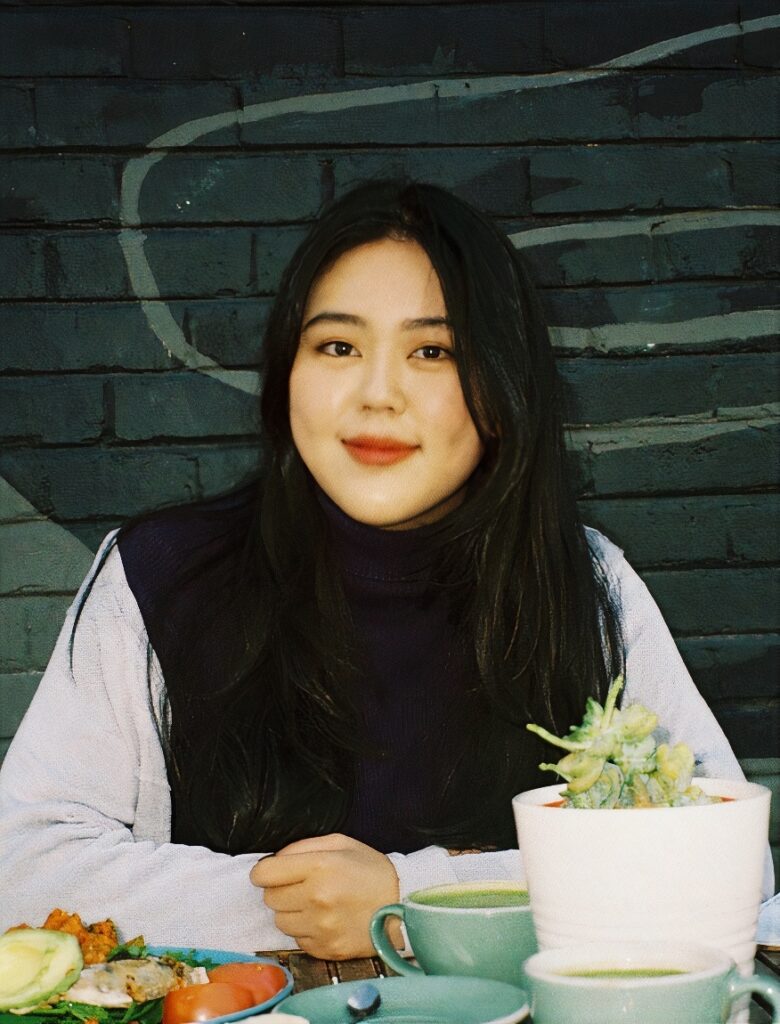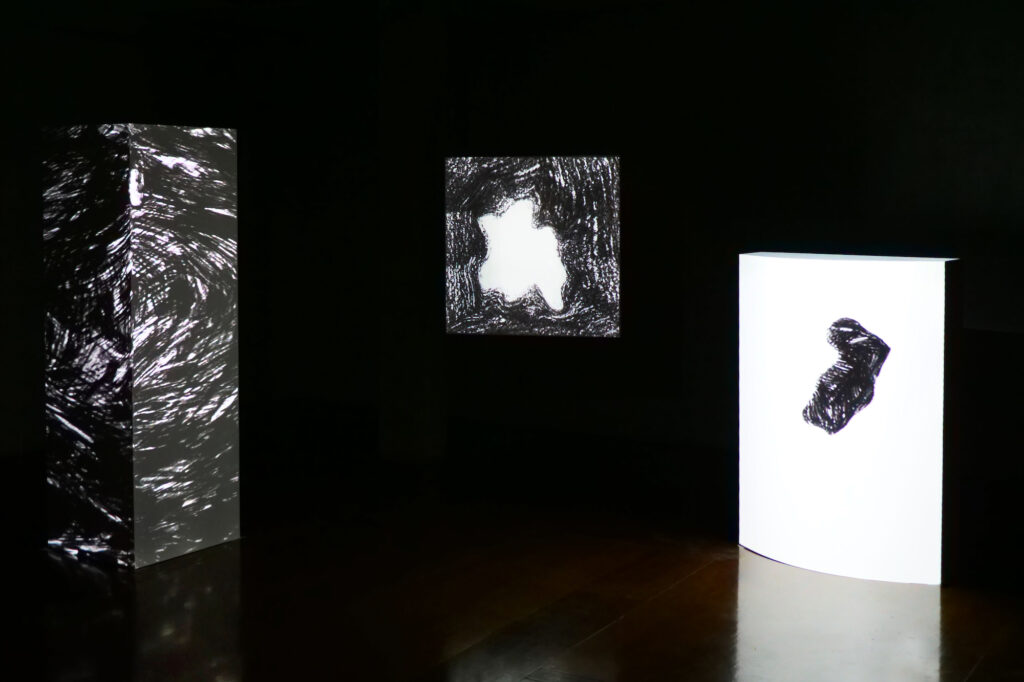Local emerging artist Annie Huang tells Nina Levy how she’s managing the challenges of being an emerging artist and a post-graduate student in COVID times.
Hatching at home
20 May 2020
- Reading time • 9 minutesVisual Art
More like this
- A walk with Tina Stefanou
- A blaze of glorious people
- Diving into the gothic world of Erin Coates
Informed by her Chinese-Australian heritage, Annie Huang’s artistic practice explores her identity as a person of Chinese ethnicity, born and raised in Perth, Western Australia. A 2019 graduate, she has commenced a Master of Fine Arts at the University of Western Australia and is one of 24 emerging artists whose work has been selected to be exhibited at PICA’s annual “Hatched: National Graduate Show”, currently postponed due to COVID-19 restrictions.
This is Q&A is part of a series that profiles West Australian artists and arts workers, and reveals how they are working during these challenging times.
Nina Levy: Tell us about your artistic practice.
Annie Huang: My practice is definitely a very fluid one; I like changing and experimenting with different mediums and methods. I started off like most people, in painting and drawing, however my recent works aim to bring these more “traditional” methods into combination with electronic mediums such as projection mapping and video softwares.

For me it is the process of playing and experimenting that keeps the process interesting, or maybe it’s because of how indecisive I am. My practice really began by looking at my own cultural background as a second-generation Chinese-Australian. This understanding is very important to me as I think I’ve always struggled finding my ground when it comes to my background and my home. It is a similar situation for many others out there too.
My work aims to navigate and explore the ambiguous and mutable nature of a multicultural identity, to understand the foreign and the unknown by bringing the familiar into a strange and displaced context. It is as much an exploration for myself to learn about my own Chinese culture, as it is to present an exploration for others.
NL: What does a “normal” day look like for you?
AH: A “normal” day wasn’t much faster than the current times. Having recently finished Honours which was an introduction into research, and now been accepted into a Master of Fine arts research course, and I had been making a routine of going into campus every day. If I wasn’t in the library doodling or reading, I was probably in the fine arts studio seeing what everyone was making, or I was doodling again. In between this I would tutor here and there in the day time on campus. Coming home in the evenings would usually be a nice relaxing time having dinner and catching up on my shows.
NL: And what does your average day look like now?
AH: It is honestly quite a strange day with Animal Crossing being the only thing that helps me distinguish each day. It’s equally busy working from home, with many emails and many Zoom meetings to keep on track with. My average day now looks like a lot of different food being made and eaten, a lot of mucking around with household furniture, and mild gaming.
I’ve been learning a lot of digital painting too, drawing through the iPad as well as a good old Wacom tablet. I have also been going back to playing my instruments (piano mostly) and trying to learn new things. Most days I try to spend a bit of time reading and researching as I’m in the midst of preparing a proposal for my master’s project, can’t say I’m being too productive with it at the moment, but all is well.

NL: What were your plans for 2020 before the COVID-19 shutdowns?
AH: I was looking forward to 2020 and all the things I had planned. I initially had a big Shanghai trip booked with my mum, where I had planned all these exhibits and places to visit. I’ve not been to China much so it was going to be my first proper trip. It was sadly cancelled but ultimately for the better. Coming back from the trip I was getting excited to get into routine of reading, writing and making for my research course.
Probably the most exciting thing of the year was having my work selected for the Hatched National Graduate Show. Though it has been postponed, I am extremely excited for the exhibition that is planned, thanks to the wonderful PICA team, who have been doing their best to support the artists that have been selected. I look forward to that going ahead when things get better. There was also an exciting project involving a group of lovely women and myself that would have spanned most of the year. It involved organising and curating a graduate survey exhibition that would be able to exhibit and celebrate as many Perth graduate artworks as possible.
NL: How has your practice/your 2020 plans been affected by physical distancing/shutdowns? How are you adapting to the new situation?
AH: Basically everything I had planned has been affected, and I’m sure it is the same for many people. I must say, though, that I have been extremely fortunate in that I have the privilege of simply isolating at home and have had most things postponed, not cancelled. I have recently been working on a lot of video projections, and building big structures, so I’ve had to stop with these things due to the circumstances. I try to do some smaller works instead, and more playing around with digital mediums.
While it has been difficult trying to work and keep motivated being at home, I’ve tried to direct myself to some light enjoyable things that keep some creative thoughts going. I have been reading graphic novels in styles I’ve never read, watching all sorts of animations, movies and TV shows that I typically don’t watch. I’ve also been playing many games, it’s really a whole other world. Overall things haven’t changed for me too much, apart from being confined at home.
NL: What are the biggest challenges that physical distancing brings to your work/practice?
AH: This biggest challenge is definitely not being around creative people and a creative environment. Being on campus and being able to talk about ideas or simply just chat with everyone around me and my supervisors was a big part of my process. Just seeing what others were making or reading as well as being able to go visit exhibitions or shows would keep the brain juices going.
NL: And what have been the silver linings to this time of isolation?
AH: There are definitely many good things about this period of isolation, like not having to make an excuse to be cosy at home all day especially as it is getting colder. Being able to spend a lot more time with family, and really appreciating our garden space a whole lot more. Most of all, having the time to really explore new things I’ve wanted to do but never got around to doing. Another good thing about isolation for me, which may sound odd, is getting more comfortable with communicating through phone calls and video calls. I’ve never been a big fan of talking through the phone let alone a video call, something about it made me feel like I was being put on the spot. So now I’ve discovered how convenient it is for some things. Finally and most importantly, having the ability to slow down and rest.
I guess my biggest conclusion in terms of navigating creative work in this strange time of isolation is to not feel guilty that I’m not out and about getting “things” done. Instead it was good to branch out and play with anything I found interesting or comforting. It didn’t have to be something that was “worth” the time. Whether that was exploring the game world, or learning how to build nail forms for my mum. Ultimately I think it all contributes to art making one way or another.
PICA’s “Hatched: National Graduate Show 2020” has been postponed – stay tuned for updates from PICA.
Pictured top: ‘Without 境(borders)’, multimedia installation exhibited at Cullity Gallery for the University of Western Australia’s Fine Arts Major (FAM) exhibition 2019. Photo: Annie Huang
Like what you're reading? Support Seesaw.






